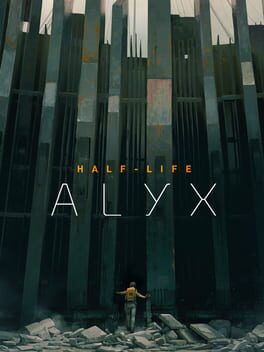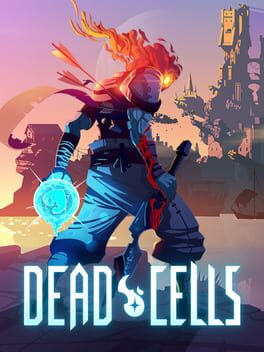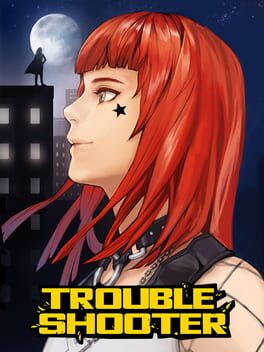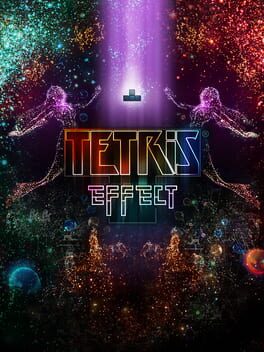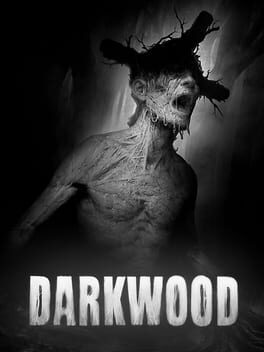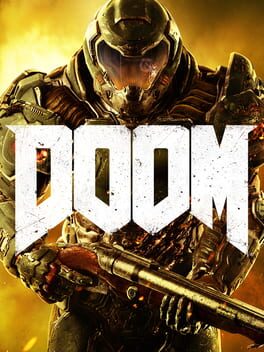PistolPumpkin
Bio
Nothing here!
Badges

Best Friends
Become mutual friends with at least 3 others

Noticed
Gained 3+ followers

Liked
Gained 10+ total review likes

Roadtrip
Voted for at least 3 features on the roadmap
Favorite Games
086
Total Games Played
012
Played in 2024
047
Games Backloggd
Recently Played See More
Recently Reviewed See More
Darkwood was a fantastic horror game that delivered an unforgettable experience full of immersion, mystery, and pure dread. At a glance, the unusual top down perspective and the simple, pixelated art style didn’t seem very effective for the genre. However, this game showed me that the artistry of horror games was not in the graphics or in any particular camera perspective, but in its fluid mastery over atmosphere and tension.
From beginning to end, tension in Darkwood never really simmered down. From my first day in the cursed Polish woods I was scrambling to survive and prepare for the coming onslaught of spirits and monsters at night. Acid Wizard’s impeccably eerie sound design cast a sinister mood onto even the most tranquil of golden meadows, and indeed as I delved further into the forest, the beauty of nature gave way to reveal hidden nightmares in the shadows. At night, these nightmares launched full on attacks at my ramshackle cabin, and the desperate struggle to remain alive for one more minute, one more second, praying for the salvation of sunrise was more compelling than any horror set piece in higher budget games.
The world building of Darkwood often reminded me of Jeff Vendermeer’s Annihilation, a novel about a strange alien force that gradually refracts and assimilates all organic matter within its range to create illogical, monstrous, yet sometimes beautiful new creatures. It was a terrifying concept, and I loved exploring it again in Darkwood as well. My only gripe with the lore was that too much of it was obfuscated. I think I managed to piece together about 30% of the game’s full story. Most of my appreciation for Darkwood’s deep lore came from reading other people’s interpretations, and I wished these fascinating details had been more apparent during my playthrough.
I think having a more concrete story and gradual unraveling of the game’s mysteries would’ve helped immensely in the latter half of Darkwood. This game was a lot longer than I had expected it to be, and while the excellent gameplay and atmosphere stayed engaging for 20 hours or so, it became increasingly stretched and frayed past that mark. Gathering loot all day to prepare for another night in the woods was starting to feel like a chore, and I had long given up trying to look for any answers in the story. When I finally reached what looked like an ending I felt relieved and glad to finally let this amazing but overlong adventure conclude.
From beginning to end, tension in Darkwood never really simmered down. From my first day in the cursed Polish woods I was scrambling to survive and prepare for the coming onslaught of spirits and monsters at night. Acid Wizard’s impeccably eerie sound design cast a sinister mood onto even the most tranquil of golden meadows, and indeed as I delved further into the forest, the beauty of nature gave way to reveal hidden nightmares in the shadows. At night, these nightmares launched full on attacks at my ramshackle cabin, and the desperate struggle to remain alive for one more minute, one more second, praying for the salvation of sunrise was more compelling than any horror set piece in higher budget games.
The world building of Darkwood often reminded me of Jeff Vendermeer’s Annihilation, a novel about a strange alien force that gradually refracts and assimilates all organic matter within its range to create illogical, monstrous, yet sometimes beautiful new creatures. It was a terrifying concept, and I loved exploring it again in Darkwood as well. My only gripe with the lore was that too much of it was obfuscated. I think I managed to piece together about 30% of the game’s full story. Most of my appreciation for Darkwood’s deep lore came from reading other people’s interpretations, and I wished these fascinating details had been more apparent during my playthrough.
I think having a more concrete story and gradual unraveling of the game’s mysteries would’ve helped immensely in the latter half of Darkwood. This game was a lot longer than I had expected it to be, and while the excellent gameplay and atmosphere stayed engaging for 20 hours or so, it became increasingly stretched and frayed past that mark. Gathering loot all day to prepare for another night in the woods was starting to feel like a chore, and I had long given up trying to look for any answers in the story. When I finally reached what looked like an ending I felt relieved and glad to finally let this amazing but overlong adventure conclude.
Scorn was one of very few games that I got excited for from the day of announcement and purchased immediately on the day of release. At the time, I felt my money would be well spent to simply see the haunting, surreal art of Giger and Beksinski come to life in a 3D interactive environment. In that aspect, Scorn delivered. The monstrous architectures forged from flesh and bone by some merciless, uncaring force completely captured my imagination. Bekskinski’s desolate, poignant hellscapes stretching across my screen had me stunned with awe.
All I wanted was to be fully immersed in these otherworldly environments, to traverse and explore at my own pace in contemplative isolation. Unfortunately, while Scorn was a brilliant experiential piece of art, it was also a bad video game. The combat was terrible and the puzzles were uninspired, but my biggest gripe was that these things existed in the game at all. Pistols, shotguns, keys, health stations, and puzzle minigames all felt like such contrived, gamey intrusions upon this exquisitely crafted universe.
Why were these eldritch, biomechanical fortresses designed to sculpt life from dead flesh being operated with simple block puzzles and maze puzzles? Did blasting shots into the tortured creatures really add anything to Scorn’s themes and story? The artists tried to camouflage these video game features with a Giger-esque aesthetic, but grafting some fleshy knobs and phallic frills to these gizmos didn’t really make them feel any less contrived. In this era of gaming where “walking simulator” titles such as Firewatch and Soma are celebrated, I don’t see why the devs couldn’t just cut the stale checklist of mechanics and let Scorn’s true strengths shine.
My biggest disappointment came after I had finished the game, when I was looking up information about Scorn’s worldbuilding. Google turned up an array of fantastic concept illustrations, bits of deep lore that were only mentioned in the artbook, and a variety of grotesque creature designs. Such imaginative ideas, all forever trapped in those pages, never to meet their potential. I’m glad I got to see some of that madness in this iteration of Scorn, but it’s disheartening to realize that something so beautiful was here on the cusp of emerging, only to perish during its molt.
All I wanted was to be fully immersed in these otherworldly environments, to traverse and explore at my own pace in contemplative isolation. Unfortunately, while Scorn was a brilliant experiential piece of art, it was also a bad video game. The combat was terrible and the puzzles were uninspired, but my biggest gripe was that these things existed in the game at all. Pistols, shotguns, keys, health stations, and puzzle minigames all felt like such contrived, gamey intrusions upon this exquisitely crafted universe.
Why were these eldritch, biomechanical fortresses designed to sculpt life from dead flesh being operated with simple block puzzles and maze puzzles? Did blasting shots into the tortured creatures really add anything to Scorn’s themes and story? The artists tried to camouflage these video game features with a Giger-esque aesthetic, but grafting some fleshy knobs and phallic frills to these gizmos didn’t really make them feel any less contrived. In this era of gaming where “walking simulator” titles such as Firewatch and Soma are celebrated, I don’t see why the devs couldn’t just cut the stale checklist of mechanics and let Scorn’s true strengths shine.
My biggest disappointment came after I had finished the game, when I was looking up information about Scorn’s worldbuilding. Google turned up an array of fantastic concept illustrations, bits of deep lore that were only mentioned in the artbook, and a variety of grotesque creature designs. Such imaginative ideas, all forever trapped in those pages, never to meet their potential. I’m glad I got to see some of that madness in this iteration of Scorn, but it’s disheartening to realize that something so beautiful was here on the cusp of emerging, only to perish during its molt.
I never played the original Doom, so I was surprised to find that this classic shooter formula could feel so refreshing and new after 30 years. I very much enjoyed the purely aggressive gameplay, and while I usually prefer having a little more story in games, I could respect the decision to not get bogged down with too much writing. Besides, the Doom Slayer’s fiercely irreverent attitude towards Samuel Hayden and other major characters was very amusing.
Oh, and the music! I think at least half of this game’s experience was carried by its powerful metal soundtrack. A game like Doom that focuses on just one aspect of gameplay can feel repetitive after a while, but this soundtrack had a way of putting my brain in a trancelike state of flow with only a single directive: Rip and Tear. It was incredibly liberating to zip around the map, blasting demons while this intense battle music was thumping in my ears.
There were still some frustrating moments in the game, especially in the levels with excessive platforming and hoards of tankier enemies. Sometimes I didn’t feel much like a Doom Slayer but more like a fish in a barrel, especially as boss fights started to happen. So I ended up going back to the previous levels, tediously scouring the maps for secrets and challenges until I was fully upgraded. I know some people love hunting for secrets, but I wished gameplay upgrades weren’t so intertwined with those.
Despite the low points I still enjoyed Doom 2016 and appreciated its dedication to being a pure shooter first. Also the arcade mode was excellent. I still fire it up once in a while for some condensed action and stress relief. I’m so glad this game has led to the revival of classic shooters and I’m looking forward to trying more of them.
Oh, and the music! I think at least half of this game’s experience was carried by its powerful metal soundtrack. A game like Doom that focuses on just one aspect of gameplay can feel repetitive after a while, but this soundtrack had a way of putting my brain in a trancelike state of flow with only a single directive: Rip and Tear. It was incredibly liberating to zip around the map, blasting demons while this intense battle music was thumping in my ears.
There were still some frustrating moments in the game, especially in the levels with excessive platforming and hoards of tankier enemies. Sometimes I didn’t feel much like a Doom Slayer but more like a fish in a barrel, especially as boss fights started to happen. So I ended up going back to the previous levels, tediously scouring the maps for secrets and challenges until I was fully upgraded. I know some people love hunting for secrets, but I wished gameplay upgrades weren’t so intertwined with those.
Despite the low points I still enjoyed Doom 2016 and appreciated its dedication to being a pure shooter first. Also the arcade mode was excellent. I still fire it up once in a while for some condensed action and stress relief. I’m so glad this game has led to the revival of classic shooters and I’m looking forward to trying more of them.




